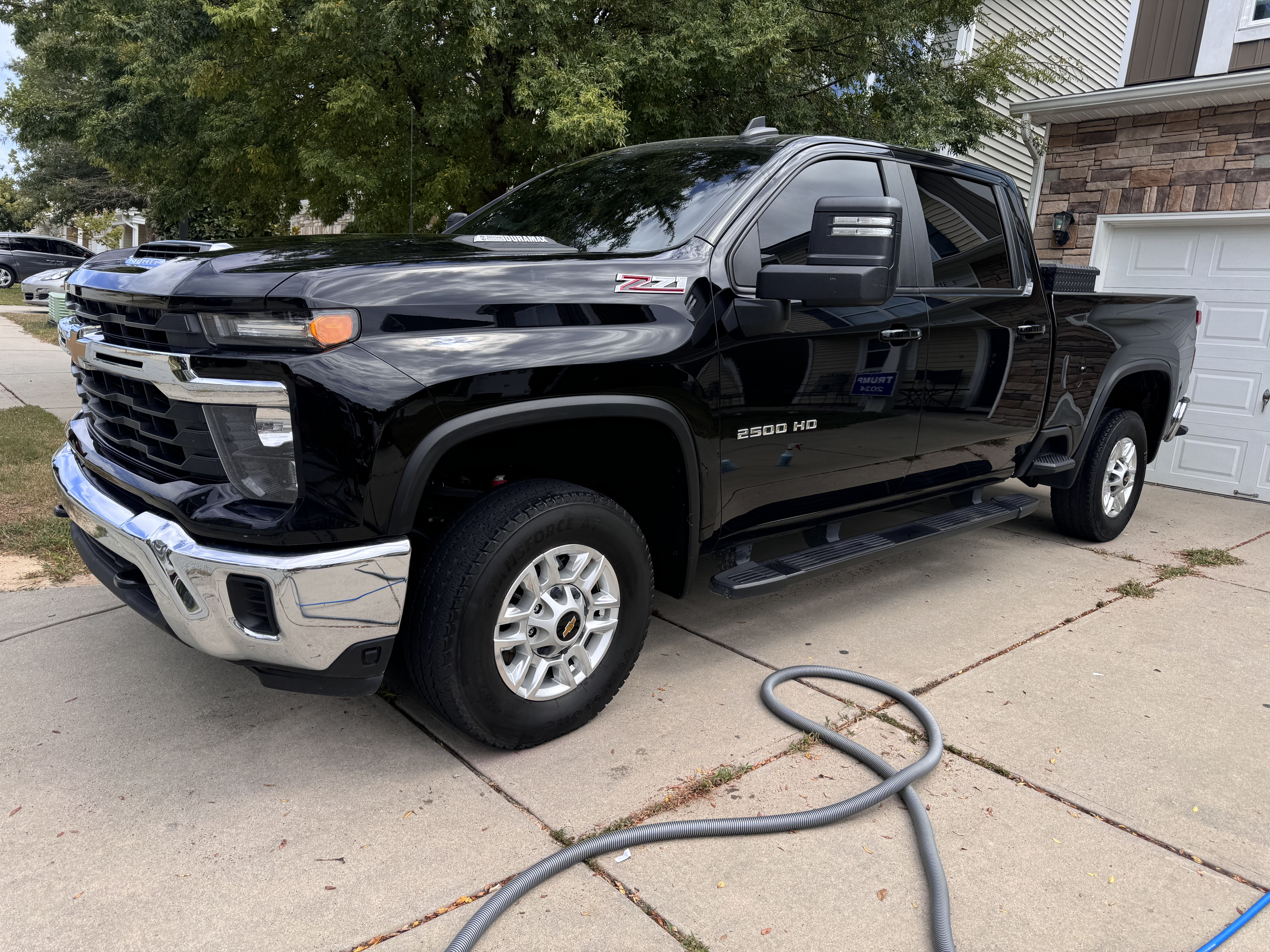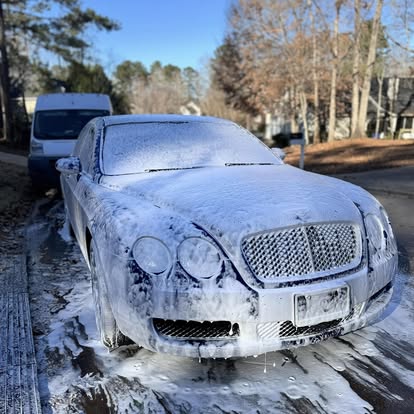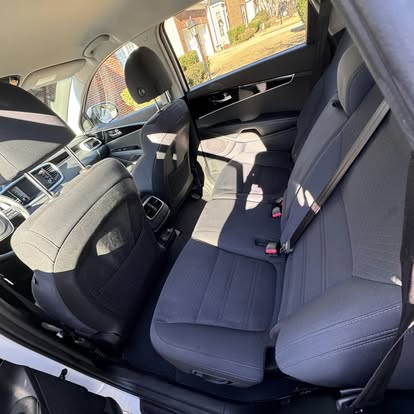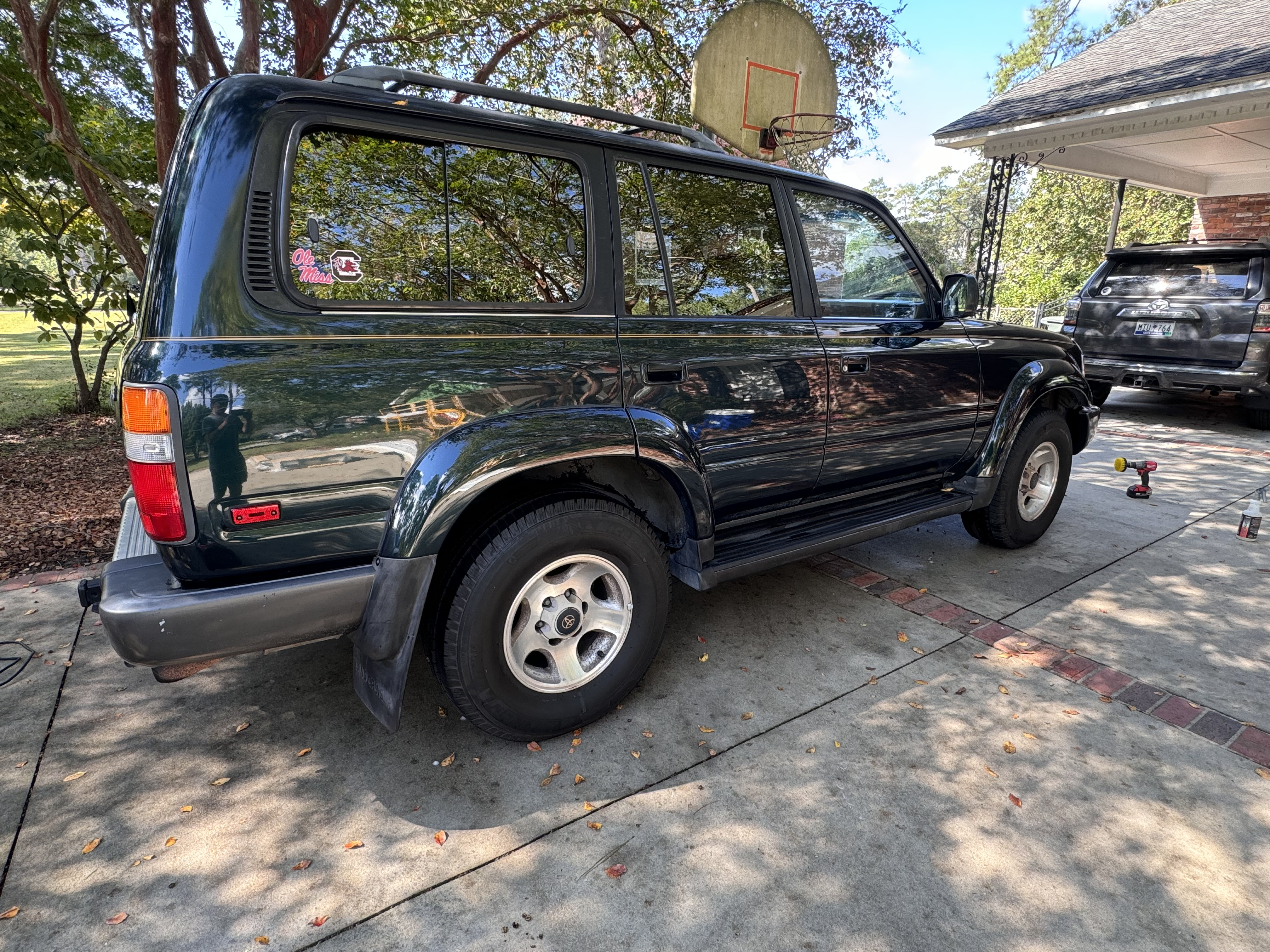Paint correction transforms dull, scratched, and swirl-marked paint into mirror-like perfection. After performing hundreds of paint correction services across Columbia and the Midlands, I've witnessed dramatic before and after transformations that restore vehicles to showroom condition—or better. This comprehensive guide explains what paint correction is, the process involved, realistic expectations, and why it's essential for South Carolina vehicles.
What Is Paint Correction?
Paint correction is the process of removing imperfections from vehicle paint through machine polishing. Unlike waxing that fills scratches temporarily, paint correction actually removes a microscopic layer of clear coat to eliminate defects and restore clarity. It's a permanent solution that reveals the true beauty hidden beneath years of damage.
Common Paint Defects Corrected
Professional paint correction addresses various imperfections:
Swirl marks: Fine circular scratches visible in direct light, typically caused by automated car washes, improper washing techniques, or low-quality towels. These are the most common defects on Columbia vehicles.
Scratches: Light to moderate scratches that haven't penetrated through clear coat. Deep scratches reaching base coat or primer require touch-up paint before correction.
Oxidation: Fading and chalky appearance from UV damage. Extremely common on South Carolina vehicles due to intense sun exposure. Dark colors show oxidation as fading; light colors develop a chalky residue.
Water etching: Marks left by mineral deposits in water spots. Columbia's hard water makes this especially problematic. If not addressed quickly, water spots etch into clear coat permanently.
Holograms: Buffer trails left by inexperienced detailers or body shops using incorrect polishing techniques.
Bird dropping etching: Acid damage from bird droppings baked onto paint in South Carolina heat. These can etch clear coat within hours on hot days.
Tree sap damage: Sap staining and bonded contamination from Columbia's abundant trees.
The Paint Correction Process
Step 1: Paint Depth Measurement
Professional paint correction begins with paint depth gauge measurements. We measure clear coat thickness across multiple panels to ensure sufficient material for safe polishing. Most factory clear coat measures 1.5-2.5 mils thick. We remove only 0.1-0.5 mils during correction, leaving plenty of protection.
Resprayed panels often have thicker or thinner paint than factory specs, requiring adjusted techniques. Measuring prevents dangerous over-polishing that could burn through clear coat.
Step 2: Thorough Washing and Decontamination
Paint must be completely clean before polishing:
Pre-rinse: Remove loose dirt and debris to prevent scratching during washing.
pH-neutral wash: Two-bucket method with quality car soap eliminates dirt safely.
Clay bar treatment: Removes bonded contaminants—tree sap, industrial fallout, tar, and overspray—that washing can't eliminate. This is critical for Columbia vehicles exposed to pine sap and pollen.
IPA wipe: Isopropyl alcohol removes all oils, waxes, and residues, revealing true paint condition.
Step 3: Paint Inspection and Lighting
Proper inspection under high-intensity LED lighting reveals all defects. We mark problem areas with tape and photograph them for documentation and before/after comparison. This inspection determines correction level needed.
Step 4: Compounding (Heavy Correction)
For heavily damaged paint, compounding is the first polishing stage:
Purpose: Remove deep scratches, heavy oxidation, and severe defects.
Process: Aggressive polishing compound with cutting pad on dual-action or rotary polisher removes more clear coat material to level surface.
Results: Eliminates major defects but leaves minor marring that requires refinement.
Not all vehicles need compounding. Light to moderate defects skip directly to polishing stage.
Step 5: Polishing (Refinement)
Polishing refines paint to mirror finish:
Purpose: Remove fine scratches, swirl marks, and marring left by compounding.
Process: Fine polish with softer polishing pad creates gloss and clarity. Multiple passes with progressively finer products achieve perfection.
Results: Deep, reflective gloss with minimal visible defects.
Step 6: Finishing (Jeweling)
Final finishing step removes any remaining micro-marring:
Purpose: Achieve flawless, hologram-free finish.
Process: Ultra-fine finishing polish with soft foam pad refines paint to absolute clarity.
Results: Mirror-like reflection with perfect clarity and depth.
Step 7: Protection Application
Paint correction removes existing protection, leaving paint vulnerable. We immediately apply protection:
Ceramic coating: Preferred option. [service-ceramic-coating] locks in perfection for years while adding hardness, hydrophobic properties, and UV protection.
Paint sealant: Synthetic protection lasting 3-6 months.
Carnauba wax: Traditional protection offering 1-3 months durability with warm glow.
For South Carolina vehicles, ceramic coating provides best long-term value after investing in paint correction.
Paint Correction Levels Explained
Single-Stage (Level 1) Correction
What it is: One polishing step using all-in-one compound/polish combination.
Defect removal: 50-70% of defects. Improves appearance significantly but won't achieve perfection.
Time required: 4-8 hours for average sedan.
Best for: Daily drivers, budget-conscious owners, or vehicles with light to moderate defects.
Cost in Columbia: $300-500
Two-Stage (Level 2) Correction
What it is: Compounding followed by polishing for refined results.
Defect removal: 85-95% of defects. Significant transformation with near-flawless results.
Time required: 8-16 hours depending on vehicle size and condition.
Best for: Enthusiasts, show cars, or heavily damaged paint needing major improvement.
Cost in Columbia: $600-1,200
Multi-Stage (Level 3+) Correction
What it is: Multiple compounding and polishing steps for absolute perfection.
Defect removal: 95-99% of correctable defects. As close to perfect as possible.
Time required: 16-40+ hours for complete vehicle.
Best for: Concours show cars, exotic vehicles, or customers demanding absolute perfection.
Cost in Columbia: $1,200-3,000+
Before and After: What to Expect
Realistic Expectations
Paint correction produces dramatic results, but understanding limitations prevents disappointment:
What paint correction CAN do:
- Remove swirl marks and fine scratches in clear coat
- Eliminate oxidation and restore color depth
- Remove water spots and etching (if not too deep)
- Restore gloss and clarity
- Create mirror-like reflection
- Make paint look better than new (factory paint often has defects)
What paint correction CANNOT do:
- Fix deep scratches through clear coat to base coat or primer
- Repair stone chips or paint damage
- Fix dents, dings, or body damage
- Change paint color or coverage issues
- Restore paint with insufficient clear coat thickness
- Prevent future damage without protection
Typical Before and After Scenarios
Black Car Covered in Swirl Marks
Before: Spiderweb of fine scratches visible in sunlight. Dull, hazy appearance. Paint looks gray instead of black in certain light.
After: Mirror-like black reflection. Deep, wet look. Sharp reflections with no haze or swirls. True black color restored.
Impact: Most dramatic transformation. Black shows defects worst but also shows correction best.
Oxidized Red Vehicle
Before: Faded pink/orange appearance. Chalky residue on towel when wiping. Dull, flat finish with no depth.
After: Rich, vibrant red restored. Deep gloss with clear reflections. Color looks factory-fresh.
Impact: Extreme transformation. Red oxidizes fastest in South Carolina sun—correction restores years of lost vibrancy.
Water-Spotted White SUV
Before: Visible water spots and mineral deposits from hard water. Etching visible as rough texture and dull spots.
After: Smooth, uniform white finish. Glass-like clarity. No visible spots or etching.
Impact: Significant improvement. White hides many defects but water spots are very visible—correction eliminates them completely.
Paint Correction for South Carolina Vehicles
Why Columbia Cars Need Paint Correction
South Carolina's environment accelerates paint damage:
UV exposure: Clear coat oxidation occurs faster than milder climates. Five years in South Carolina sun equals 8-10 years in northern states.
Heat: Summer temperatures exceeding 140°F on paint surface accelerate contamination etching. Bird droppings and bug splatter cause permanent damage in hours rather than days.
Automated car washes: Popular for convenience, these create thousands of fine scratches over time. Most Columbia vehicles need correction after 2-3 years of automated washing.
Hard water: Mineral content in Columbia water leaves spots that etch paint if not removed promptly.
Best Time for Paint Correction in Columbia
Fall (September-November): Ideal timing. Summer damage addressed, temperature comfortable for working, less pollen and bugs. Paint correction before winter provides fresh protection.
Late winter (January-February): Good option. Prepare for spring/summer with fresh correction and protection before pollen season.
Avoid peak summer: Extreme heat makes working difficult and curing times unpredictable. Spring pollen season also complicates outdoor work.
DIY vs Professional Paint Correction
DIY Paint Correction Reality
Paint correction requires specialized equipment, products, and—most importantly—skill:
Equipment costs:
- Dual-action polisher: $150-400
- Polishing pads (multiple types): $50-100
- Compounds and polishes: $50-150
- Paint depth gauge: $200-600 (optional but recommended)
- Proper lighting: $100-300
- Total investment: $550-1,550
Skill requirements: Understanding pad pressure, polisher speed, product selection, and proper technique takes practice. Mistakes can burn through clear coat, requiring expensive repainting.
Time commitment: First-time correction on average vehicle: 20-40 hours (including learning curve and mistakes).
Professional Correction Advantages
- Experience: Hundreds or thousands of vehicles corrected—expertise prevents costly mistakes
- Equipment: Professional-grade polishers, specialized pads, premium compounds
- Proper environment: Climate-controlled workspace prevents contamination during process
- Insurance: Professional liability covers rare accidents
- Efficiency: What takes beginners 30 hours takes pros 8-12 hours
- Results: Consistent, flawless outcomes versus trial-and-error learning
For most owners, professional correction provides better value when considering equipment costs, time investment, and risk of mistakes.
Maintaining Paint After Correction
Paint correction is an investment—proper maintenance preserves results:
Immediate Protection
Apply ceramic coating, sealant, or wax within 24 hours of correction. Never leave corrected paint unprotected in South Carolina climate.
Proper Washing Technique
- Use two-bucket method with quality microfiber wash mitt
- pH-neutral car soap only
- Rinse thoroughly before touching paint
- Avoid automated car washes
- Dry with clean, plush microfiber towels or air blower
Quick Contaminant Removal
Remove bird droppings, bug splatter, and tree sap within 24 hours. Use quick detailer spray and microfiber towel—never scrape or rub aggressively.
Regular Maintenance Details
Professional [service-mobile-detailing] every 3-4 months maintains protection and removes bonded contaminants before they cause damage.
Parking Habits
Garage parking when possible. If outdoor parking necessary, use quality car cover or find shaded spots to reduce UV exposure and contamination.
Paint Correction Cost Factors
Several factors influence paint correction pricing in Columbia:
Vehicle size: Sedans cost less than SUVs or trucks due to surface area.
Paint condition: Heavily damaged paint requires more time and materials.
Desired results: Show-quality perfection costs more than daily driver improvement.
Paint color: Black and dark colors show defects more, requiring extra care and time.
Additional services: Headlight restoration, wheel polishing, or trim correction add cost.
Protection choice: Ceramic coating after correction costs more but provides better value than wax.
Is Paint Correction Worth It?
For most Columbia vehicle owners, paint correction provides significant value:
Resale value: Professional correction increases resale value $500-2,000 depending on vehicle. Buyers pay premium for well-maintained paint.
Pride of ownership: Driving a car that looks showroom-perfect provides daily satisfaction worth the investment.
Protection from elements: Combined with ceramic coating, correction and protection prevent damage costing far more to repair later.
One-time investment: Unlike repeated waxing or detailing, correction is permanent. With proper protection and maintenance, results last years.
Transform Your Vehicle's Appearance
Paint correction delivers the most dramatic before and after transformation available in automotive detailing. For Columbia, SC vehicles suffering from swirl marks, oxidation, water spots, or general dullness, professional correction restores paint to better-than-new condition.
Combined with quality protection like [service-ceramic-coating], paint correction provides years of mirror-like perfection while defending against South Carolina's harsh environmental conditions. Whether preparing a vehicle for sale, maintaining an enthusiast car, or simply wanting your daily driver to look its absolute best, paint correction is the foundation of exceptional automotive appearance.




